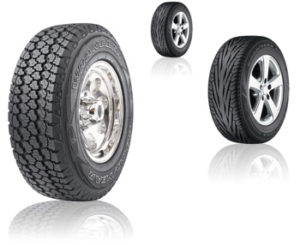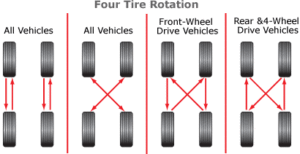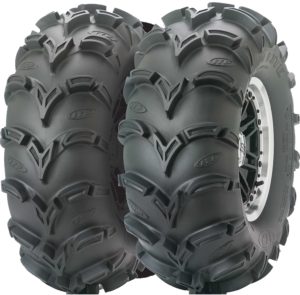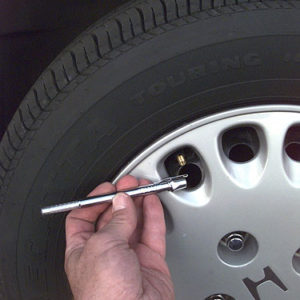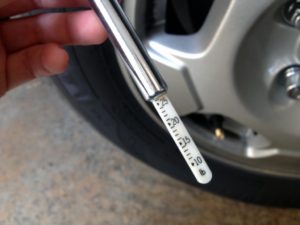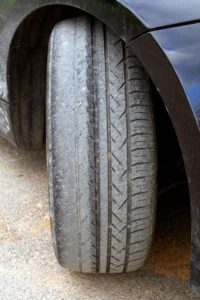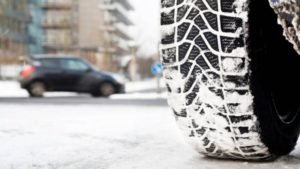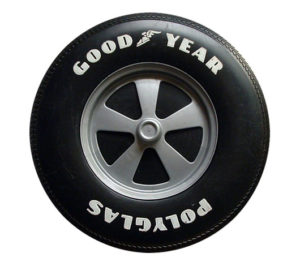 Do tires wear faster in hot weather? Sergio, who works at Sergio’s Automotive in Thousand Palms, explains. “Because tires are made of rubber and what people don’t normally see is the air in the tire actually expands more when the temperature rises. And on the asphalt on the freeway, it’s a little hotter than normal because you’re getting all those cars going by all the time. Friction from contact with a hot road surface and friction within the tire produces even more heat.” The air inside the tire will rise and this increases the tire pressure inside the tire.
Do tires wear faster in hot weather? Sergio, who works at Sergio’s Automotive in Thousand Palms, explains. “Because tires are made of rubber and what people don’t normally see is the air in the tire actually expands more when the temperature rises. And on the asphalt on the freeway, it’s a little hotter than normal because you’re getting all those cars going by all the time. Friction from contact with a hot road surface and friction within the tire produces even more heat.” The air inside the tire will rise and this increases the tire pressure inside the tire.
Tires Wear Faster in Hot Weather
In addition, the rubber becomes more soft and pliable as temperatures rise and friction increases the temperature of the rubber even more. Soft rubber on hot asphalt is a perfect place for tires to wear fast! Winter tires are made of a softer rubber than summer tires so if you have winter tires on your car in the summer tire they will wear even faster than the normal summer tire. Once the snow is gone, if you live in areas where you get a lot of snow, it is time to install summertime tires. Low tire pressure will also increase friction and help a rubber tire wear even faster.
So how do you check your tread to see if it’s too low?
Tires Wear Faster in Hot Weather – If you feel that your tires have worn down too much due to use and summertime friction, check your tires before they get too bald. “The best idea, if you don’t have any kind of tool, is to always put an Abe Lincoln, a penny. And if it’s above the Abe Lincoln head you’re alright. Once it’s below usually that’s where it is when you need to change your tires. Sometimes there are indicators wear marks on the tire themselves. This is a warning that your tire’s tread is getting thin and it is time to change your tires.”
Always purchase tires that are the right size for your car. Most people will just check the sidewall of their existing tires and replace them with the same tire. However, your tire dealer can look up your car, make, and model to see what range of tires are suitable for your vehicle. It is important to install the right kind of tires with the proper speed and load rating. They help your vehicle maintain stability at low and high speeds.
Improper tire size can cause accidents due to instability when turning corners or curves at high speed or even changing lanes on the highway. Improper tire size can also contribute to your tires wearing faster than normal. You really are not getting your mileage out of the tire that you are supposed to.
Vehicle Inspection at Maintenance Time
Tires Wear Faster in Hot Weather. One of the best times to check your tires is when you have the oil changed. If your tires are worn down due to mileage or high temperatures, your oil change technician will usually point this out. Many oil change shops now will do an inspection of all fluids, check the tire pressure, and note if your tire tread is getting thin. They will let you know if your tires should be changed. If they fail to point this out, ask them to check for you specifically. Ask for advice regarding your tires.
Make sure that your tires are at the proper tire pressure and have the correct amount of tread. This will ensure that your tires are safe to drive on at all normal speeds. They will also ensure that you get the best possible gas mileage as well. With the cost of gas these days it is important to make sure that everything is working properly on your car. So that you get the best possible gas mileage. This includes your tires.
For more information about tire safety and tire performance, click here.
